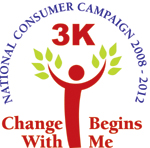According to the Malaysian Association of Standards Users (Standards Users) Director, Ratna Devi Nadarajan, parents should place priority on safety as poorly designed toys may cause harm and injuries.
"It is sad that injuries due to toys are poorly recorded in Malaysia but in the United States, according to data from the Consumer Product Safety Commission (US CPSC), at least 16 children, none older than nine years old died in 2004 from toy-related injuries.
"Approximately 210,300 people sought treatment in hospital emergency rooms in 2004 for toy-related injuries. At least 72,800 (35 per cent) of those injured were younger than five years old," she told Bernama here recently.
Ratna Devi said riding toys such as non-powered scooters accounted for more injuries than any other category of toys.
TOY SAFETY LAWS, STANDARDS
In terms of passing laws or regulations against the marketing of unsafe toys, Ratna Devi said many countries in the world have taken the initiative to do so.
Most of the said laws and regulations have incorporated the requirements for toys manufactured or sold in the country which complied with various safety standards developed for toys.
"Among such standards are the requirements for phthalates (plastic residues), lead in paint and design (exclusion of sharp or pointy edges) and size (small parts as potential choking hazards)," she added.
Toddlers under the age of three or even four years old have the tendency to put toys into their mouths.
With that in mind, the standard outlines requirements to prevent choking and transfer of hazardous chemicals from the toy into the infant's body, she said.
Even the materials used to make toys are also required to prevent fire hazards and poisoning.
"In countries like Albania, regulations against unsafe toys have been implemented even though this country is behind Malaysia in terms of economic development.
"But sadly in our country, young Malaysian consumers are unable to enjoy the protection by law for the toys they enjoy so much," said Ratna Devi.
CONCERNS OVER SAFETY
In voicing her concern over toy safety in Malaysia, she referred to a draft on toy safety regulation initiated by the Ministry of Domestic Trade and Consumer Affairs (KPDNHEP) in 2005 with the support from the Department of Standards Malaysia.
"We are yet to see this regulation being implemented. Without the regulation, which actually imposes the ban on toy consignments which are unsafe and based on what criteria?" she asked.
According to Ratna Devi, the Department of Standards Malaysia has developed a series of standards on toy safety.
These MS ISO 8124-1:2001 Safety of Toys: Part 1: Safety Aspects Related To Mechanical and Physical Properties MS ISO 8124-3: 2002 Safety of Toys: Part 3: Migration of Certain Elements and MS ISO 8124-2: 1999 Safety of Toys - Part 2: Flammability.
"What needs to be done is to adopt these standards as technical regulations or making compliance to these standards mandatory," she said.
IMMEDIATE ACTION
Citing the recent worldwide recall of 1.5 million Fisher-Price toys because their paint could have contained too much lead, Ratna Devi said it is high time that the Malaysian authorities take immediate action to regulate toys and other child protection equipment like car seats, baby carriers, prams and walkers.
The regulations should include crucial requirements of product recall and injury reporting or collection data with regards to injuries due to toys or any child protection equipment.
KPDNHEP should engage other government agencies like the Violence and Injury Prevention Unit of the Ministry of Health and the Poison Centre of Universiti Sains Malaysia (USM) to conduct surveys and test toy products currently in the market.
Such a move, is crucial to establish the status of their level of physical, chemical and design safety, she said.
"This report must be made available to all stakeholders especially consumers and consumer organisations in order to further enhance awareness among consumers on safety of products.
"KPDNHEP should also further engage in promoting awareness on the compliance with the regulations among industries, importers, wholesalers and relevant government agencies," Ratna Devi added.
-- BERNAMA By Melati Mohd Ariff |



 NCCC di Pentas Media
NCCC di Pentas Media 


